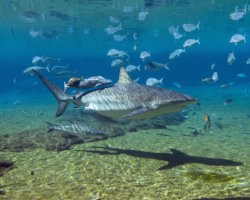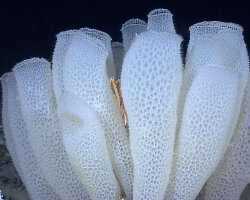Sealife guideThe queen triggerfishBalistes vetula
Last updated on 09/04/2025 at 10:41 PM
Taxonomy
- Common name: Queen triggerfish
- French name: Baliste royal, baliste vetula
- Spanish name: Cochino,peje puerco,pejepuerco cachuo
- Scientific name: Balistes vetula (Linnaeus, 1758)
- Family name: Balistidae
- Order name: Tetraodontiformes
- Class name: Actinopterygii
Description
The queen triggerfish is distinguished by its bright yellow coloration that shifts to olive green on its back, with numerous metallic blue lines on its head and fins. Its mouth is outlined by a bluish line, while two other bluish lines look like mustaches extending down to the base of its pectoral fins. Thin bluish bands radiate around its eyes, bluish edges border its fins and a blue stripe crosses the base of its tail.
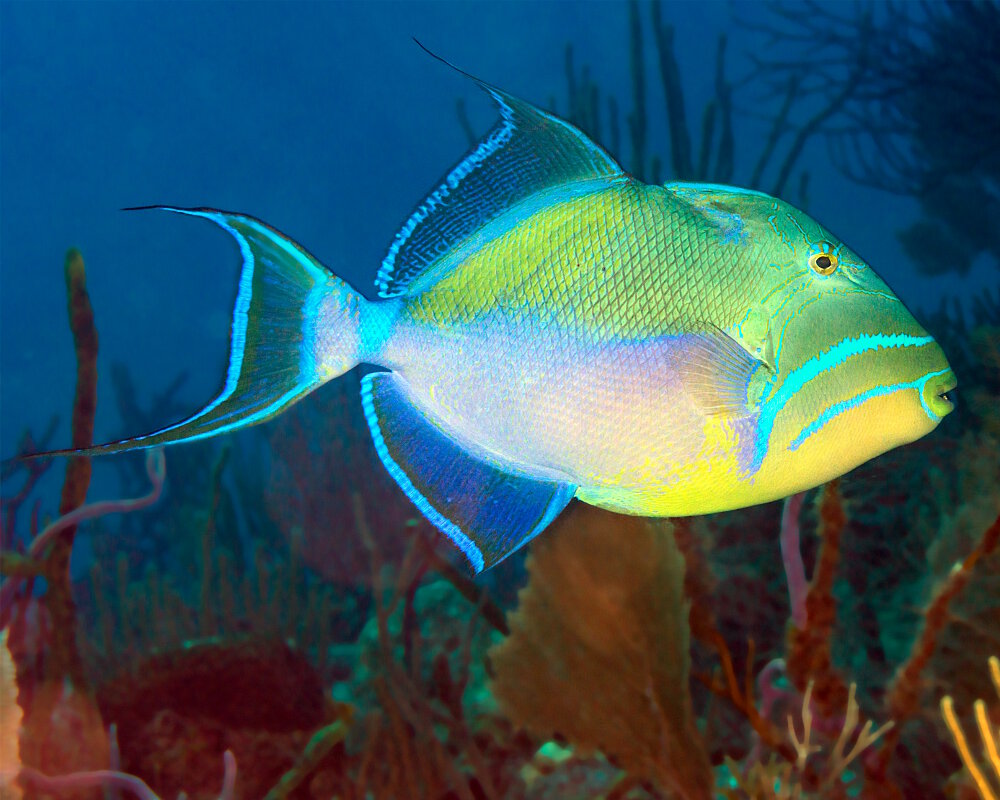
The mouth of the queen triggerfish is outlined by a bluish line, while two other bluish lines look like mustaches ©
Toby Gibson |
Dreamstime.comThe queen triggerfish has a first dorsal spine that it can lock into place with a second spine, working like a trigger mechanism. This amazing adaptation allows it to wedge itself tightly into a rocky crevice to protect itself from predators or to resist strong currents. The queen triggerfish also has very powerful jaws with strong teeth and well-developed jaw muscles, enabling it to crush the shells of mollusks or the carapaces of crustaceans.
Geographic range
The queen triggerfish is found across a very wide area of the Atlantic ocean. On the western Atlantic coast, it ranges from the temperate waters of Massachusetts in the north down to the tropical coasts of Brazil in the south, including the Gulf of Mexico and the many islands of the Caribbean sea. On the eastern Atlantic side, it occurs around several oceanic archipelagos such as the Azores, Ascension island and Cape Verde and further south along the coasts of Angola.
Habitat
The queen triggerfish mainly inhabits reef and rocky zones where it finds both shelter and food. It is especially fond of coral reefs rich in hiding places, which it uses both to protect itself from predators and to sleep, wedging itself into a crevice with its dorsal spine.
The queen triggerfish is usually found down to about 100 feet deep but can live much deeper, to around 900 feet.
Diet
The queen triggerfish is a carnivorous species that feeds mainly on benthic invertebrates. Its diet consists mostly of sea urchins, crabs,
mollusks and other hard-shelled organisms. To reach these prey, it uses a remarkable variety of techniques: it can bite directly, suck, manipulate prey in its mouth, or even use a jet of water to flip sea urchins and expose their more vulnerable underside.
With the help of its powerful jaws, the queen triggerfish is capable of crushing thick shells, making it a formidable predator of coral and rocky bottoms. By regulating sea urchin populations, it plays an essential role in maintaining the balance of coral reefs.
Reproduction
The queen triggerfish is an
oviparous species. Using its fins or by blowing jets of water, it digs a circular nest in the sand, often in shallow reef areas. The female lays her eggs there, which are then fertilized and fiercely guarded by the male. During this period, the male becomes highly territorial and does not hesitate to chase away potential intruders, including divers.
Did you know ?
The queen triggerfish is listed as many other marine species within The
IUCN Red List of threatened species. The queen triggerfish appears in the
IUCN Red List since 2015 within the category Near Threatened !
Within the same genus

Turbot
(Balistes capriscus)
Within the same family
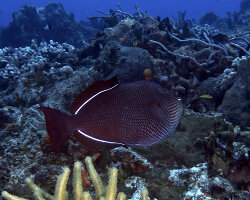
Black triggerfish
(Melichthys niger)

Orange striped triggerfish
(Balistapus undulatus)

Picasso triggerfish
(Rhinecanthus aculeatus)

Pinktail triggerfish
(Melichthys vidua)

Sargassum triggerfish
(Xanthichthys ringens)

Titan triggerfish
(Balistoides viridescens)
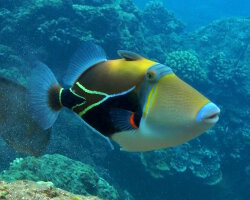
Wedgetail triggerfish
(Rhinecanthus rectangulus)

Yellowmargin triggerfish
(Pseudobalistes flavimarginatus)
Discover also

Black axil chromis
(Chromis atripectoralis)

Delicate ghost pipefish
(Solenostomus leptosoma)

European conger eel
(Conger conger)
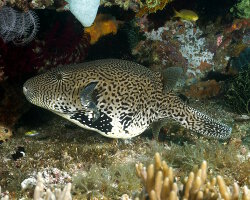
Guineafowl puffer
(Arothron meleagris)
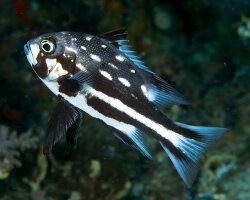
Midnight snapper
(Macolor macularis)

Pallid goby
(Coryphopterus eidolon)

Yellow and blueback fusilier
(Caesio teres)

Yellowtail wrasse
(Anampses meleagrides)
The marine species from Caribbean sea

Atlantic Goliath Grouper
(Epinephelus itajara)

Ballyhoo
(Hemiramphus brasiliensis)

Chain moray
(Echidna catenata)
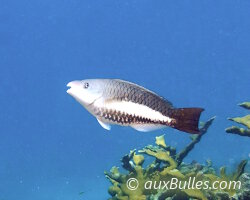
Queen parrotfish
(Scarus vetula)
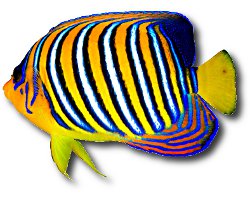
Royal angelfish
(Pygoplites diacanthus)

Sand tilefish
(Malacanthus plumieri)
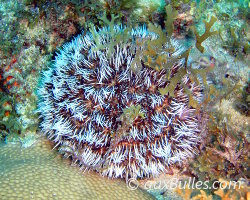
West Indian sea egg
(Tripneustes ventricosus)

Yellow tube sponge
(Aplysina fistularis)
Dive centers

'Les Ilets' dive center

Noa dive center
































